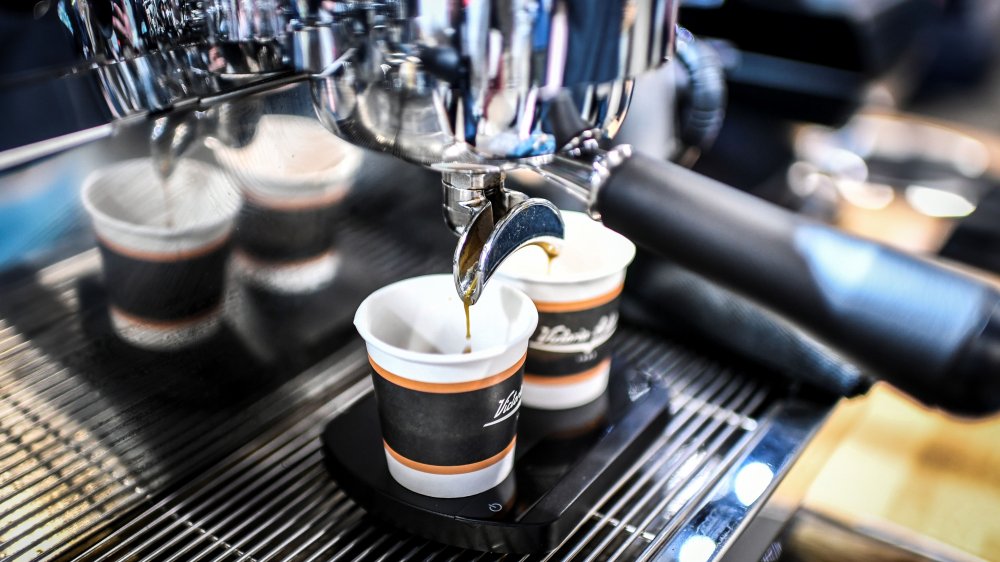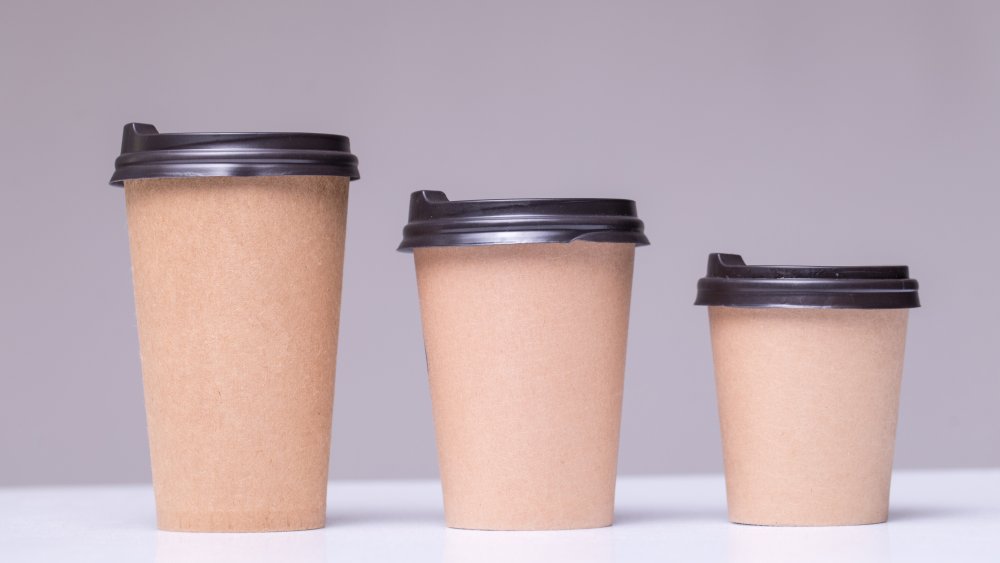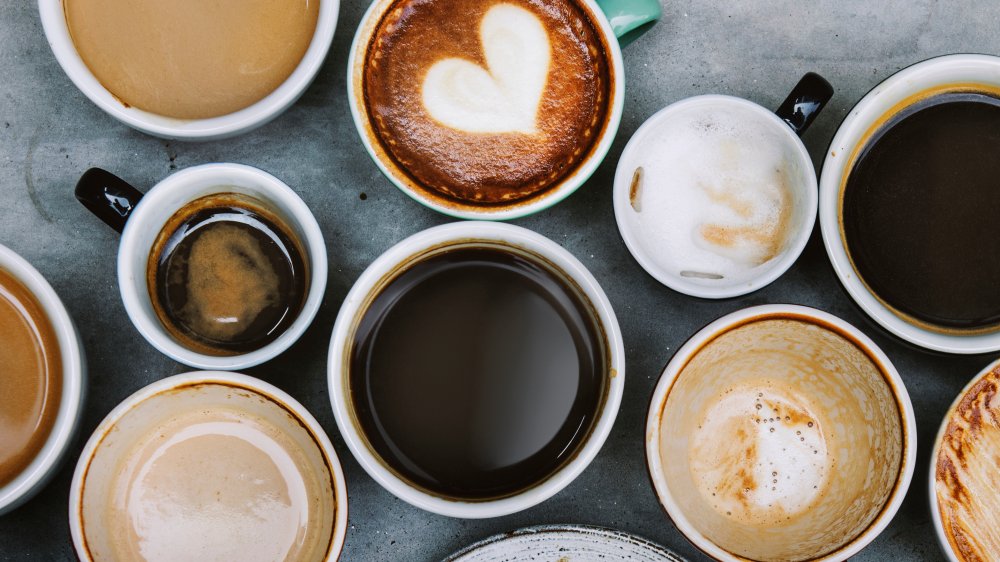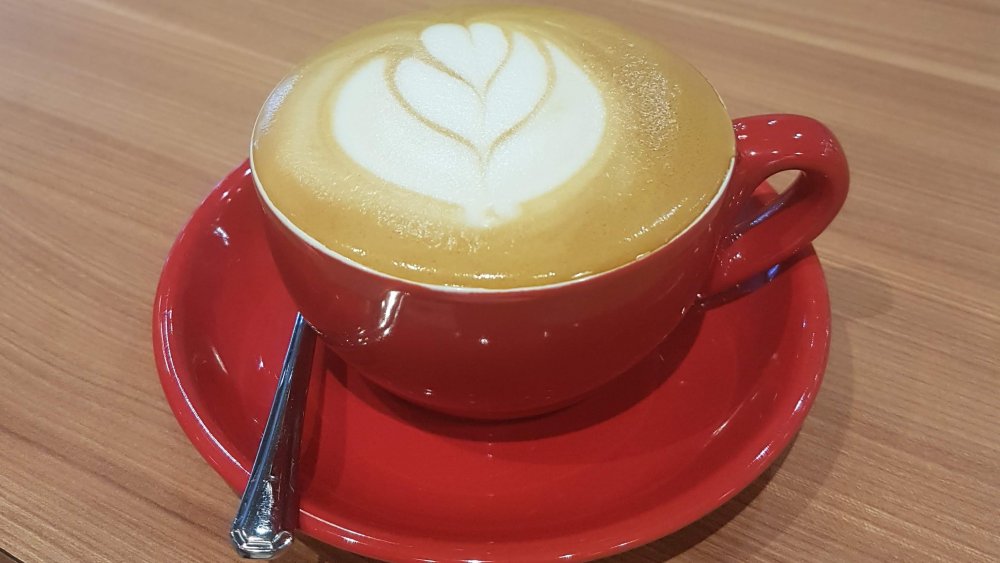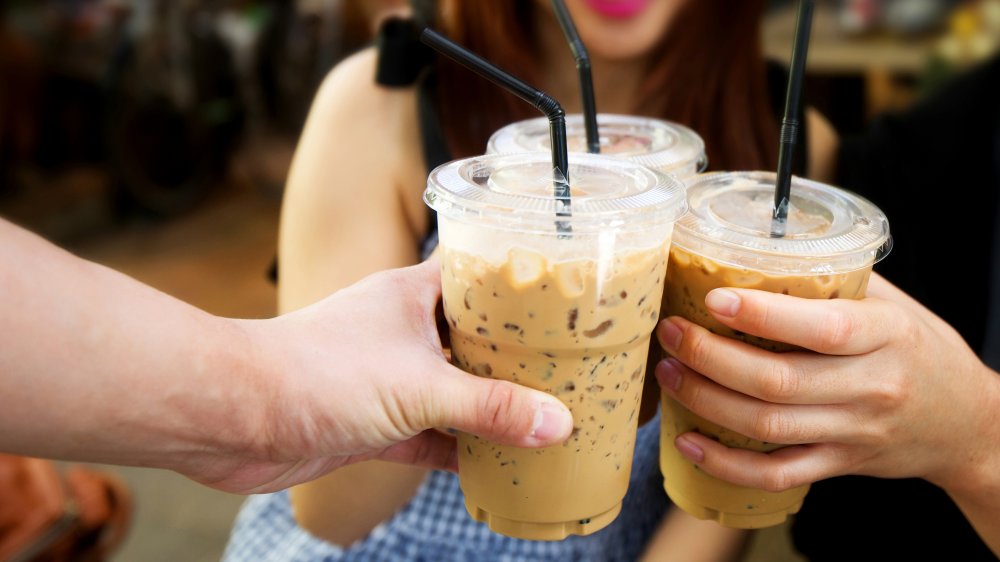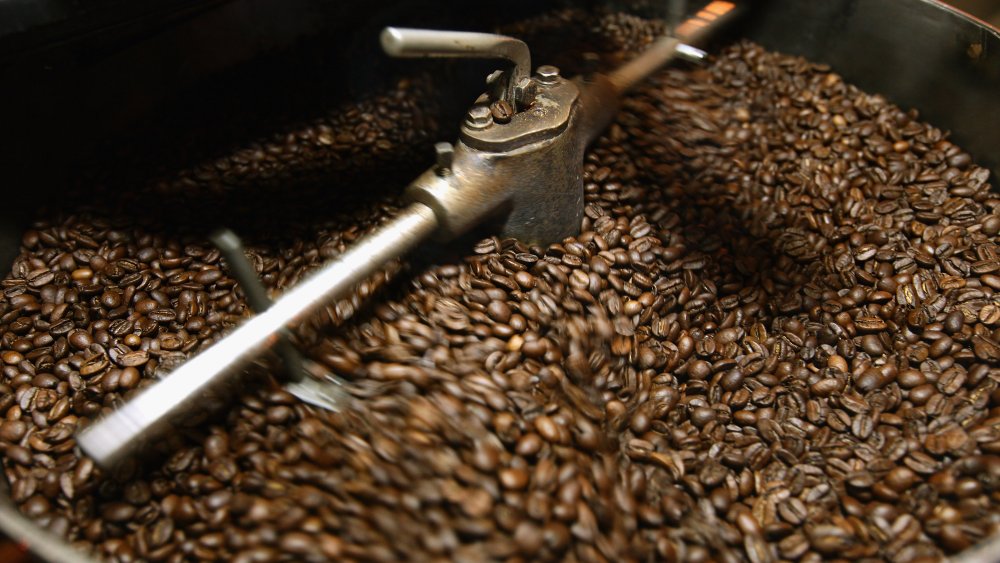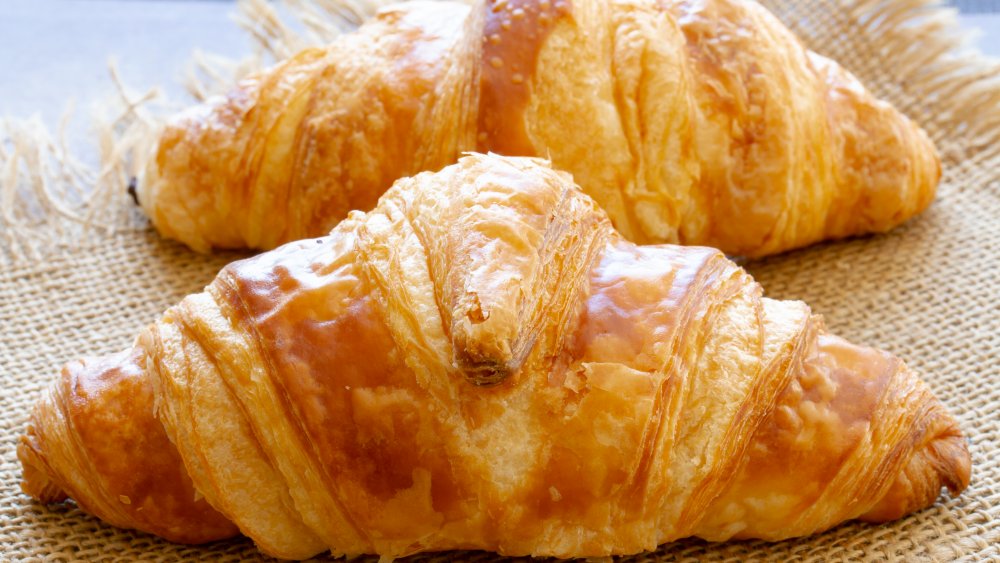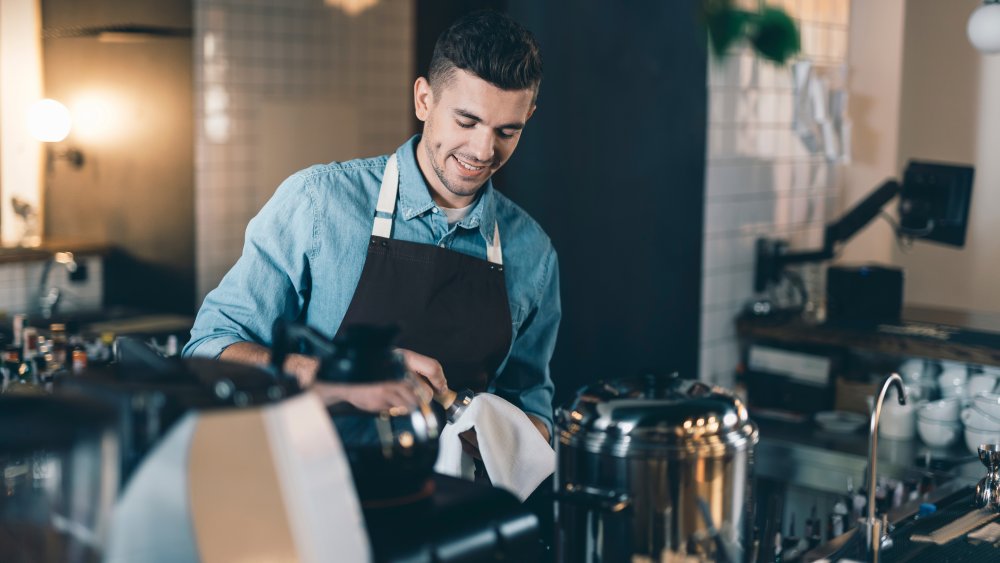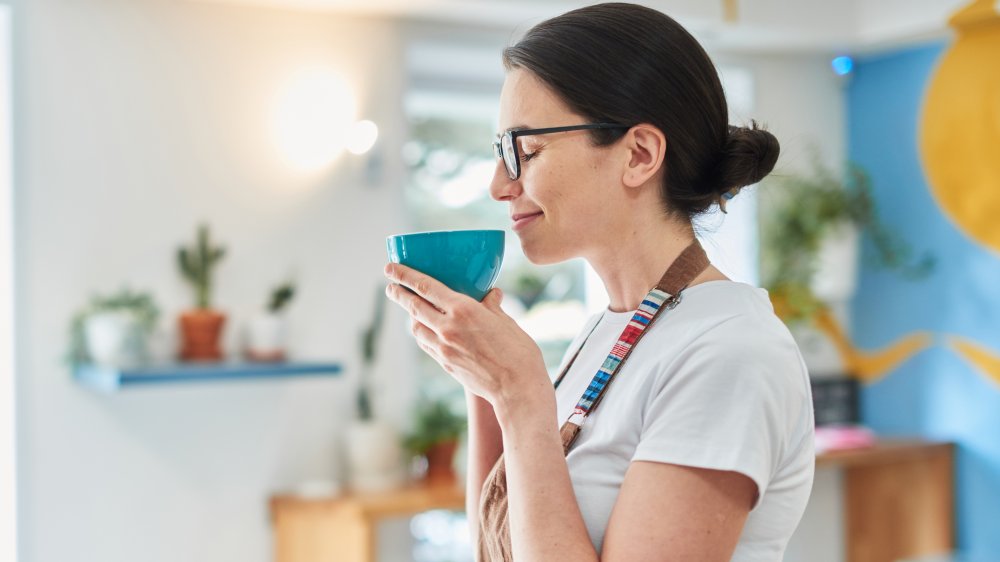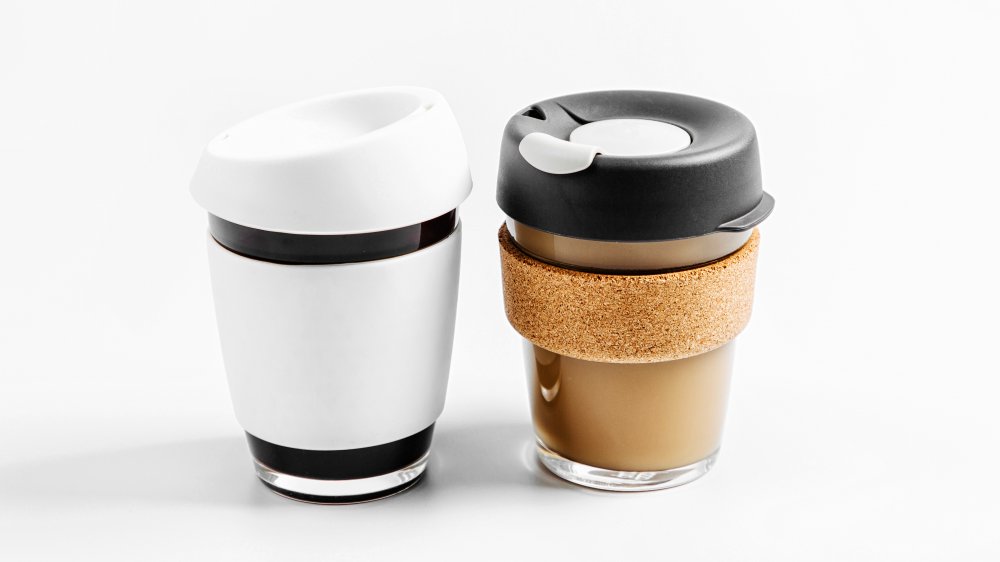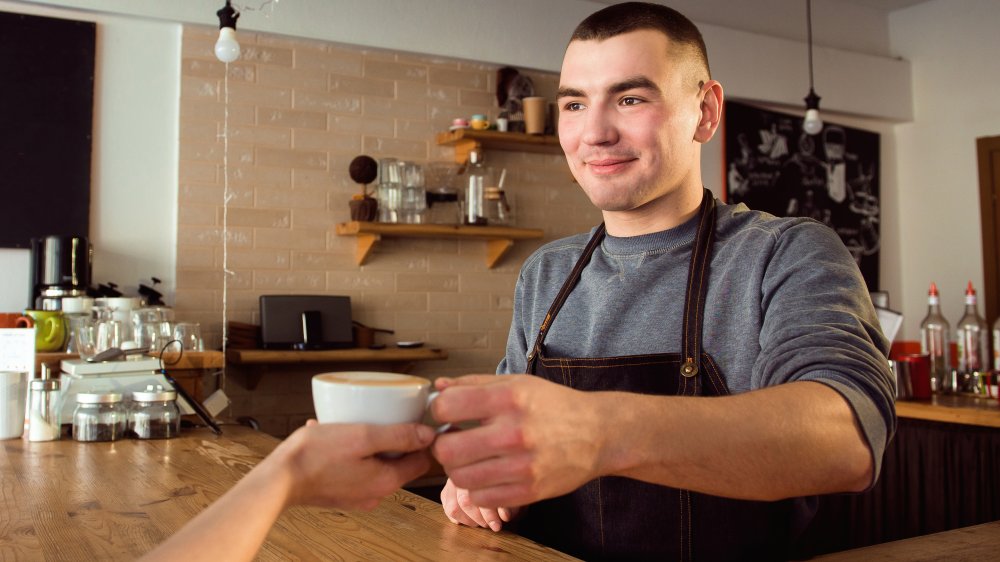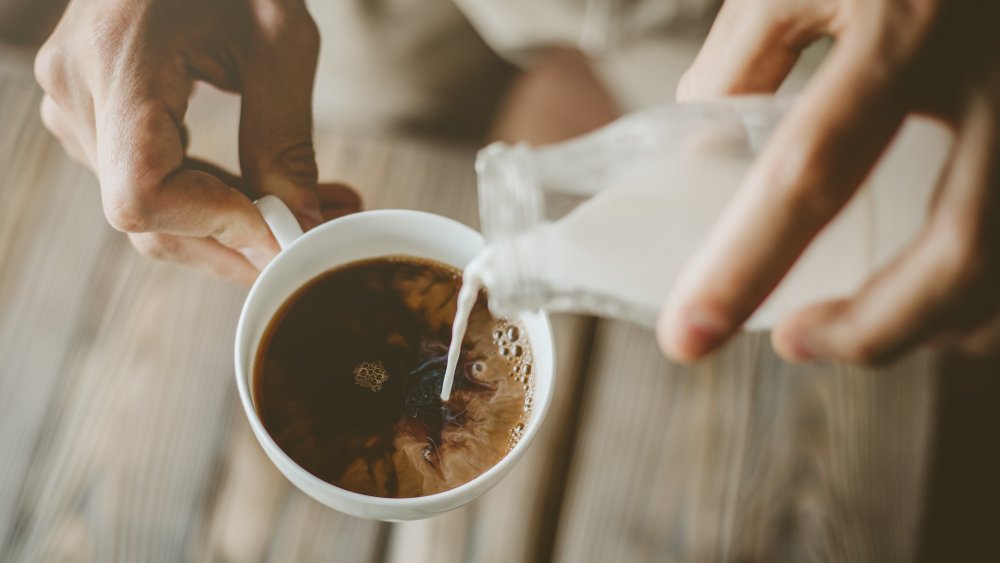Secrets Coffee Chains Don't Want You To Know
Can't start your day without a jolt of caffeine from your favorite coffee shop? You're not alone!
Americans (and Europeans, and just about everyone else in the world) love coffee, and a lot of people pay a lot of money for it every year. Whether you get coffee every morning or just treat yourself a few times a week (or a few times a day...), patronizing coffee chains is pretty much one of America's favorite pastimes.
The next time you stop in to get that venti latte, though, there are a few things you might want to know — that your barista (and the coffee shop they work for) wishes you didn't.
Here is a look behind the counter at some popular coffee chains, along with some of the ways you can save money next time you go with just a little effort. Be in the know with these secrets coffee chains don't want you to know, and you'll become a coffee-buying wizard in no time.
A larger size doesn't equal more coffee
Okay, this one might be the trickiest trick of all.
Sometimes you wake up in the morning, but you just can't seem to get over that sleepy brain fog. And what is the go-to cure for this? Extra caffeine, of course! The more the better. So you head to the coffee shop and you order a larger cup of coffee than usual, thinking that this is exactly what you need to perk you up. Unfortunately, this is not actually the case.
According to experts quoted by Market Watch, you might get more caffeine if you order a larger size of plain black coffee, but when it comes to drinks like cappuccino, you get the same amount of actual coffee no matter what size cup you order it in. For example, the Starbucks chain's caramel macchiato gets two shots of espresso whether it is grande or it is venti — the extra space in the cup is just filled with extra foam or milk. The same goes for Peet's Coffee, at which both the small and medium-sized lattes contain two espresso shots.
So how can you avoid this (or at least be aware it's happening)? Don't rely on the menu for help. The artsy descriptions of the drinks on the menu usually don't include how many shots of espresso are in each cup, so the only way to know is to ask the barista directly.
Different coffee chains have different levels of caffeine in their drinks
Coffee is coffee, right? When it comes to caffeine levels, no way.
According to a report by Business Insider, not all coffee is created equal. Different coffee chains have widely varying amounts of caffeine in their java, and you may not know that going in.
If you typically get your coffee from one place, but take a different route to work and try a new place one morning, you may find that the coffee leaves you dragging a bit more than usual — or maybe even bouncing off the walls. This could put a huge cramp in your daily routine, or could end up keeping you up all night without realizing why.
To give you an idea of the different levels of caffeine coffee could have, a McDonald's McCafe medium-sized coffee has around 145 milligrams of caffeine per serving. Tim Hortons' medium coffee, on the other hand, has closer to 205 mg. Peet's has 267 mg, and the ubiquitous Dunkin' has a whopping 302 mg. Starbucks tops all of these with a teeth-chattering 330 mg, but The Coffee Bean & Tea Leaf has three milligrams more, just barely edging out everyone's top competition and making it the most caffeinated coffee on Business Insider's list.
There's a reason specialty drinks cost so much at coffee shops
Coffee addiction is a hard habit to break, and it can be a very costly one. Coffee seems to be getting more and more expensive every day, especially when it comes to specialty or artisan drinks.
There is a reason for this, though, that many people are not aware of. According to Market Watch, some coffee is actually underpriced instead of overpriced... just so they can overprice other items.
Coffee beans are becoming more expensive, as are add-ins like sugar, milk, and cream. On top of that, even the regular black coffee is becoming more "artisan" and being crafted by people who have a lot more experience than the baristas of old, so they have to be paid more.
In order to make up for the rising prices of supplies and of the higher wages being paid, the price of a regular black coffee is kept to around $2 to keep customers coming back, but the prices of speciality drinks are being increased to $5 or more. Most customers come in looking for something fancier than just plain coffee, so the chain is able to make up for lost money by selling more of the specialty brews.
According to the author of The Undercover Economist, Tim Harford, this is the secret to how coffee chains stay in business, even if most customers are completely unaware.
Iced coffee is severely watered down
For most people, coffee is best-served hot. For those who enjoy an icy drink to sip on during the day, though, there are several types of iced coffee that are available in most stores, so you can get your coffee fix in a way that suits you. Unfortunately, though, these iced coffees are a great way to waste your moeny.
According to a worker from Dunkin', this chain's iced coffee is brewed in water and then extremely watered down. Think about it: you're adding ice, frozen water, to something that already has too much water. You can't expect that to be flavorful!
This kind of thing doesn't just happen at Dunkin'. Iced coffee is inherently prone to being watered down because of its very nature. Ice melts, and this leads to the coffee flavor getting more diluted as time wears on.
Many times you will notice your iced coffee tasting more watered down the longer you have it, but sometimes it comes out of the machine that way. This is because some chains just let the iced coffee sit behind the counter for hours (Starbucks employees say they let it sit for up to four hours at room temperature or eight hours in the fridge), which means that it is already degrading when you get it. This is even more common if you get an iced coffee during the winter, since it isn't in high demand in this "off-season."
Coffee shops probably burn their coffee on purpose
If you find yourself skipping plain coffee and ordering lattes or blended coffee drinks at your favorite coffee shop, You're probably making a wise decision — but not for the reason you think.
Many coffee chains use over-roasted coffee beans (sometimes called burned coffee beans) because it makes it impossible to taste the quality of the bean itself. You see, the coffee roasting process turns green coffee into a flavorful, aromatic cup of joe by cooking the beans at high temperatures. After the roasting process, the coffee falls into a variety of categories — light, medium, and dark roast — depending on how long the beans are roasted. According to Pine Brook Roasters, light roasts retain more flavor from the original bean. Darker roasts, however, all just taste kind of burned.
And that's dark roast coffee's biggest benefit: If you can't taste the original bean, you've succeeded at covering up defects in the original coffee. The chain doesn't have to invest in high-quality coffee beans, and you'll still get your caffeine buzz.
Dissuading you from ordering a bitter, burnt cup of coffee isn't bad for the chains, either. Drip coffee isn't the greatest money maker when compared to more expensive menu items, like lattes or cappuccinos. They can't charge as much, many chains allow free refills, and it has to be dumped out and rebrewed every couple hours.
You probably shouldn't order a croissant with your drink
Coffee can get pretty lonesome all by itself, so what better way to keep it company than by buying a sweet breakfast treat to go along with it?
Most coffee shops have scones, croissants, muffins, and other similar delicacies at the counter, just begging you to buy them, but experts from Market Watch say to ignore them.
According to baristas, these sweets are hardly ever made in-house, and they are not usually very well-made at all. They may not even be fresh: who knows how long they have been sitting there under the glass, getting stale.
Freshness and general quality aside, these cakes and muffins are still not great, as they can be extremely unhealthy. Some small scones have more than 500 calories, which, if you're counting, blows most of your daily allowance before 9 a.m. This is not even taking into account all the sugar that is in these sweets, as well as the fat. If you add that to whatever sugar and cream you have going on in your coffee, you could be staring down a pretty bad stomach ache by lunchtime.
Some chains are looking into offering healthier options, but in the meantime, you might want to skip the muffin and just stick to your latte.
Baristas have ways of getting revenge on rude coffee shop customers
We might not want to think about it, but it is pretty much common knowledge that servers and cooks in the food service industry are have the ability to spit in the food of customers who are rude to them. While most baristas probably wouldn't take it that far (we hope), they do have secret ways of getting revenge on people who aren't nice to them, or who cause a big stink at the counter.
According to Mental Floss, the number one way that baristas carry out their vengeance can be described with three letters. "They call it DTB," spills one unnamed barista, which means "'decaf that b****.'" In other words, the barista switches out regular coffee with decaf, depriving you of that all-too-necessary morning caffeine buzz.
Another even sneakier way baristas get revenge on rude customers is to line up the drinking hole in the lid of the coffee cup with the seam of the cup itself before handing it over, which results in the coffee leaking and dribbling down the face of the customer every time they take a sip. Devious!
Some baristas are drinking more than just coffee at coffee shops
To be a barista, loving coffee isn't exactly a job requirement, but it is definitely a plus.
According to baristas quoted by Mental Floss, most baristas are usually "pretty wired." They get all the free coffee they want, so they stay pretty caffeinated throughout their shift behind the counter. In some cases, they taste-test the product multiple times to make sure that it is up to par, which adds even more of a buzz, to the extent that they can develop anxiety problems and withdrawal headaches on their days off.
Health issues aside, drinking coffee is relatively harmless at a coffee shop, but according to another barista, there might just be something more going on in that coffee cup than the customers know about. "If you see a barista with a lidded cup behind the bar, there's probably a 50/50 chance: It's either coffee or beer."
Apparently baristas need a lot of help to get through the workday, and this happens at both major chains and smaller, independent specialty cafes. As long as it doesn't affect the quality of service or the beverage you're being handed, it might not matter to you, but it is surely something that the boss would not approve of if he or she knew about it!
Reusable cups can save you a lot of money at coffee shops
You don't have to be very "woke" to know that we all need to start doing more to save the environment.
Every year, we produce way too much paper and plastic waste that could easily be avoided by simply reusing the same cup more than once. To encourage this recycling, many coffee chains offer discounts on your daily coffee if you bring in a reusable cup — even though they probably don't expect many people to take advantage of that incentive. This could add up to a lot of money saved per year, and coffee addicts should look for discounts everywhere they can get them!
To make an example, Starbucks offers a deal with which you can get 10 cents off each cup of coffee if you bring in a reusable cup. "Ten cents? That's it?" You might ask, but let us assure you that those ten cents really add up over time. If you get a coffee every day and save 10 cents on that coffee every day, after one year, you would have saved over $30. Not too shabby, right?
Another added bonus of reusable cups or containers is that they are typically made of sturdier material than just paper, meaning that your coffee stays hotter for much longer. So you can sip it slowly, savoring both the flavor and the fact that you're on your way to saving a ton of money.
Some coffee shops offer cheap (or even free!) refills
It's nothing new to get a refill on your soft drink at a fast food restaurant or even at some gas stations, but what about at a coffee place?
According to Cosmopolitan, you can get refills at Starbucks for only 50 cents as long as you're still in the store. This applies to both iced and hot coffees, which is a pretty great deal, considering that first cup isn't always cheap.
Starbucks isn't the only chain that offers this kind of discount, though. Reddit users discussing this topic can say from experience that many major and minor chains offer discounted refills — or even free ones.
The price for a second helping depends on several factors, such as the quality of the coffee (obviously, the higher the quality, the higher the cost of a refill), the type of coffee shop it is (small, locally owned shops tend to charge more per refill while more "middle of the road" shops offer free refills on some coffees), and on the coffee you originally ordered. If you order a regular black coffee, you can probably get a free or low-cost refill, but something like a French roast may cost you the same as your original order.
There are tricky ways to get a specialty drink without the specialty price
Specialty drinks cost more than just a regular, plain cup of black coffee or espresso, this is just a fact. There is another fact, though, that coffee chains would hate for you to find out: you can cheat the system by ordering espresso in a cup and adding the rest of the ingredients yourself.
To make your own latte, for instance, order two shots of espresso in a regular cup. Then you pour your own milk and sweetener from home into the coffee, making a DIY latte that saves you lots of money. AOL reports that this can save you $1 to $3, which can add up to a lot of extra cash if you make the same drink every day.
Some customers take this hack a step farther and ask the barista to pour a small sized coffee drink in a large cup, then add milk from the bar. This may sound like a super smart way to upsize on the cheap, but it's also a great way to get on the bad side of your favorite barista, so we don't recommend taking this route.
